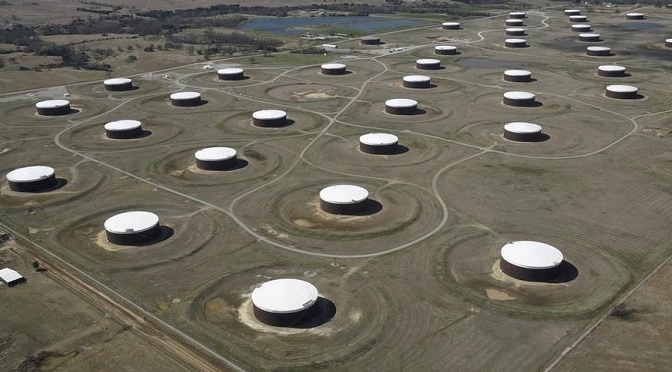-
Authoradmin
-
Comments0 Comments
-
Category
By Henning Gloystein
SINGAPORE (Reuters) – Oil prices inched up on Wednesday after China said it would raise spending to stem an economic slowdown that has been weighing on financial markets.
International Brent crude oil futures were at $61.85 per barrel at 0624 GMT, up 35 cents, or 0.6 percent, from their last close.
U.S. West Texas Intermediate (WTI) crude futures were at $53.26 per barrel, up 25 cents, or 0.5 percent.
The firmer prices followed a 2-percent fall in crude futures and a slump in international financial markets on Tuesday as concerns over global growth spooked investors into looking for safe-haven assets such as government bonds or gold.
A widespread economic slowdown is expected to dent growth in demand for fuel, weighing on energy prices.
Chinese finance ministry officials on Wednesday said the government would step up fiscal spending this year to support its economy, which last year registered its lowest growth rate since 1990.
The Bank of Japan said on Wednesday it would keep its ultra-easy monetary settings which have been running since 2013.
That came after Japan reported that its December 2018 exports fell by 3.8 percent, the most in more than two years, dragged down as weak global demand and U.S.-Sino trade frictions took their toll on the trade-reliant economy.
Meanwhile, Japan’s 2018 crude oil imports fell to 3 million barrels per day (bpd), the lowest since records started in 1979, the finance ministry said on Wednesday.
Steen Jakobsen, chief economist at Denmark’s Saxo Bank, said “the global economy is suffering”, but added that China’s government would “do all it can for stability”.
This includes for the United States and China to find a solution to their bitter trade dispute, Jakobsen said, but to prevent a sharp economic slowdown, a solution needs to show itself before Feb. 5, the Lunar New Year.
Should a deal be reached by then, “we will see powerful support for the Chinese economy”, he said, as well as the launch of strong stimulus programs to keep the economy growing.
Despite this, Jakobsen warned that stimulus programs could not keep the economy going forever, and there was a large risk of another downturn in 2020.
Providing oil prices with support in 2019 have been production cuts led by the Organization of the Petroleum Exporting Countries (OPEC), aimed at reining in an emerging supply overhang.
Whether OPEC’s efforts will be successful will also depend on the development of oil production in the United States, where crude output jumped by 2 million barrels per day (bpd) in 2018 to an unprecedented 11.9 million bpd.
The boom was largely fueled by onshore shale oil drilling. And while the U.S. Energy Information Administration (EIA) said on Tuesday that it expected shale output to rise further, it said that production growth would slow in the coming years.
(GRAPHIC: U.S. oil production growth – https://tmsnrt.rs/2AZSnDc)
Recent Comments
- Starlight Herot on Euro Higher on German Data, Sterling Edges Lower
- Frost Dragont on Euro Higher on German Data, Sterling Edges Lower
- Gwinnettt on Euro Higher on German Data, Sterling Edges Lower
- Vanessat on Euro Higher on German Data, Sterling Edges Lower
- Christinet on Euro Higher on German Data, Sterling Edges Lower
Archives
- April 2025
- March 2025
- February 2025
- January 2025
- December 2024
- November 2024
- October 2024
- February 2024
- July 2023
- July 2021
- May 2021
- March 2021
- February 2021
- September 2020
- May 2020
- February 2020
- December 2019
- November 2019
- October 2019
- September 2019
- August 2019
- July 2019
- June 2019
- May 2019
- April 2019
- March 2019
- February 2019
- January 2019
- December 2018
- November 2018
- October 2018
- September 2018
- August 2018
- July 2018
- June 2018
- May 2018
- April 2018
- March 2018
- February 2018
- January 2018
- December 2017
- November 2017





